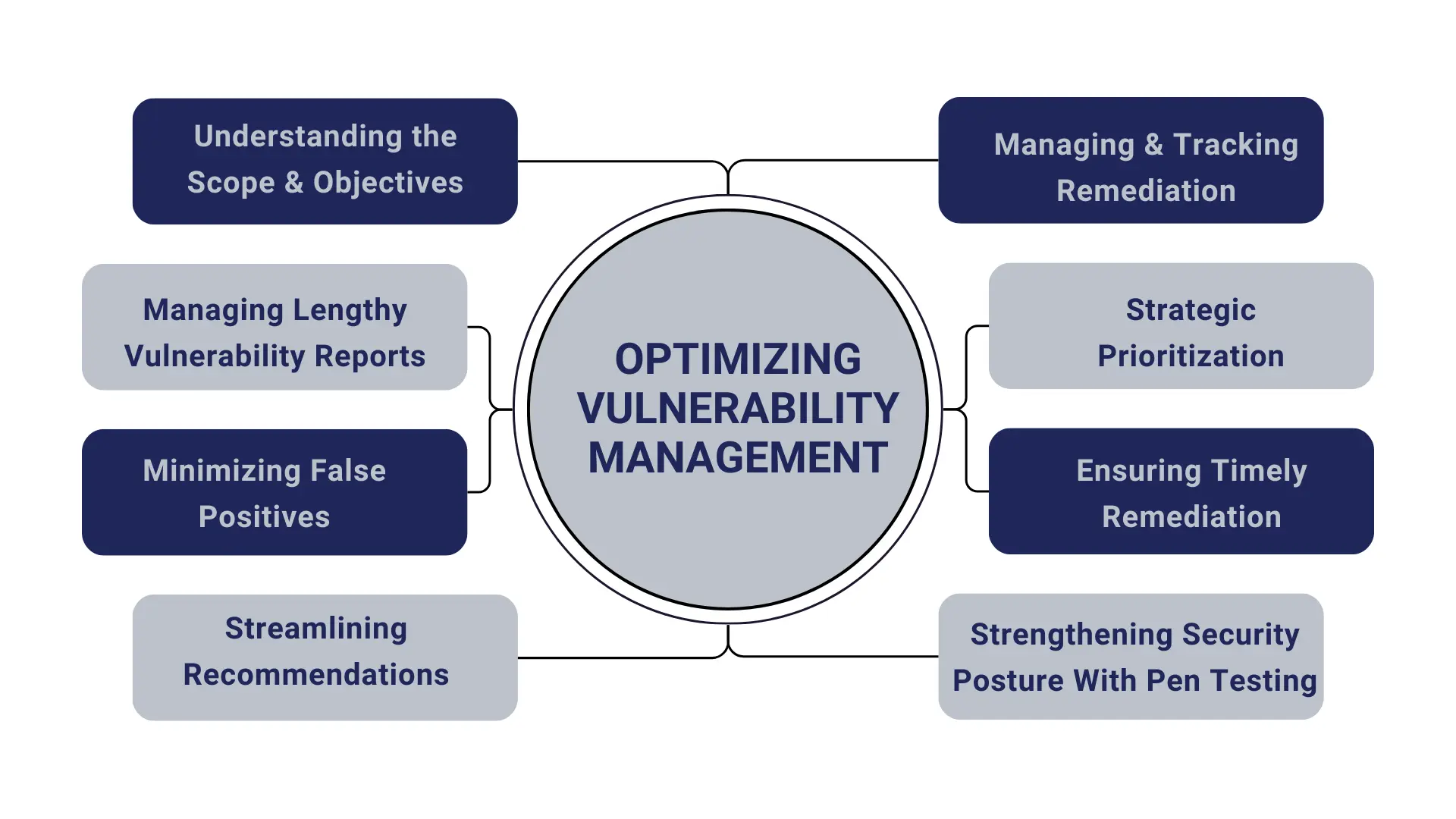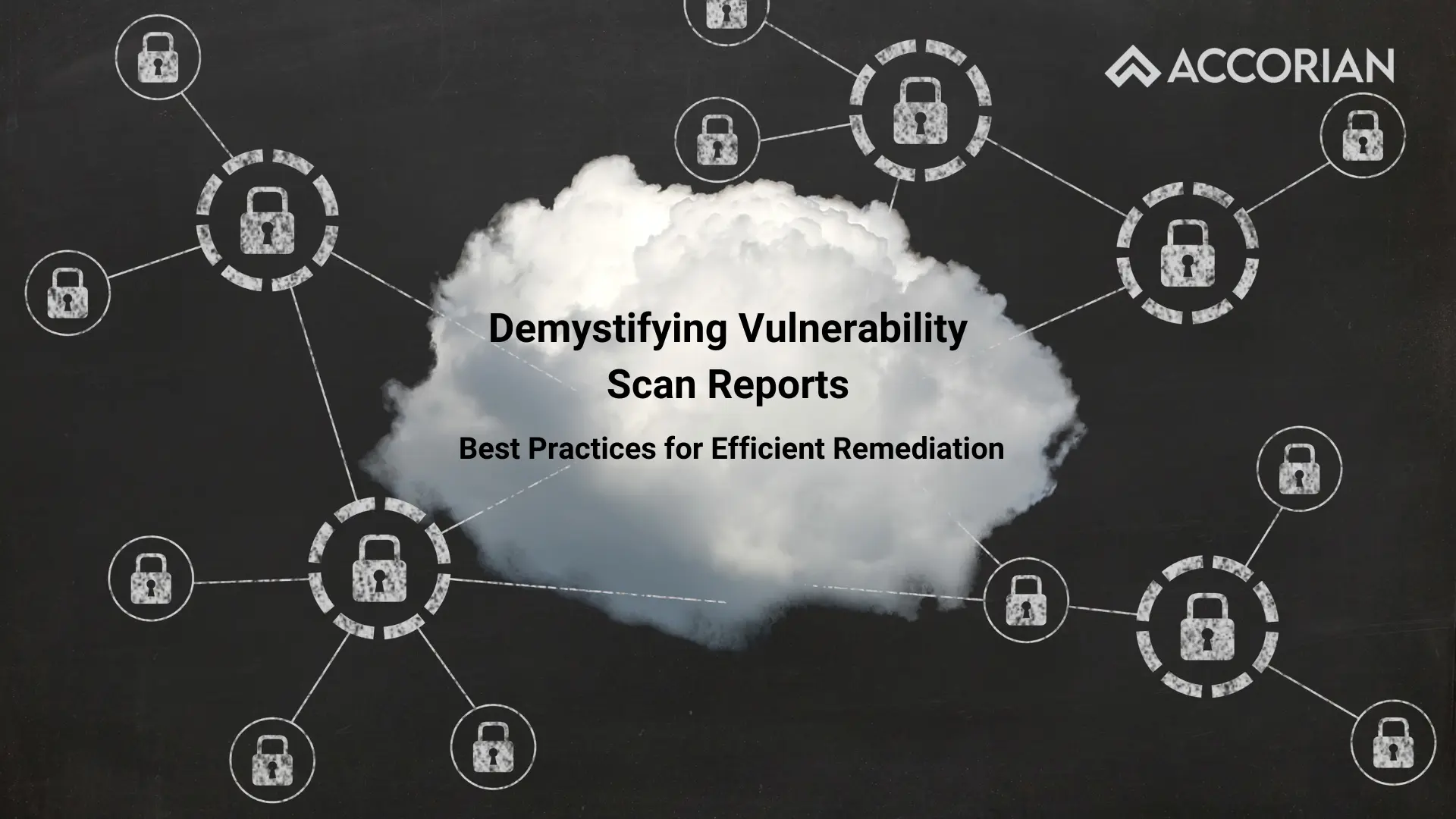Written By Somya Agarwal II
In today’s ever-evolving cybersecurity landscape, businesses face constant cyber threats and data breaches. The first quarter of 2023 alone has witnessed over six million records exposed globally, according to Statista. This alarming statistic underscores the growing concern for cybersecurity among organizations worldwide. Therefore, vulnerability scanning is crucial in cybersecurity to identify systems, networks, and applications vulnerabilities and threats.
However, effectively managing vulnerability scan reports can be overwhelming and challenging. These reports are often lengthy and complex, making it difficult for businesses to extract actionable insights. To address this challenge, organizations must understand the significance of vulnerability scanning and adopt best practices to strengthen their cybersecurity efforts.
This article aims to provide practical tips and insights, to help businesses optimize vulnerability scanning strategies and improve their overall cybersecurity posture.
What is Vulnerability Scanning?
Vulnerability scanning is a cybersecurity strategy that involves scanning systems, networks, and applications for known security flaws and vulnerabilities using specialized software tools. Organizations can detect potential risks and prioritize mitigation activities by conducting regular scans. The process aids in the strengthening of cybersecurity defenses, protecting sensitive data, and reducing potential cyber threats.
Vulnerability Scan Report
A vulnerability scan report is an important document generated by a vulnerability scanner, identifying potential security risks in an organization’s systems and applications. This report highlights vulnerabilities that attackers can exploit, providing crucial information for security experts to address security gaps within their organization. By leveraging this report, businesses can gain insights into specific areas of concern that require immediate attention and take appropriate measures to strengthen their security posture.
Optimizing Vulnerability Management: Strategies for Efficient Scan Report Analysis and Remediation

1. Understanding the Scope and Objectives
To effectively analyze vulnerability scan reports, it is crucial to understand the scan’s scope and objectives clearly. The scope outlines the systems, networks, and applications assessed for vulnerabilities, ensuring that all critical assets are included. Additionally, comprehending the objectives helps align expectations with the report’s findings. For instance, the scan might prioritize specific compliance requirements or target a particular type of vulnerability. Hence, understanding the scope and objectives provides essential context when scrutinizing the report, enabling informed decision-making and focused remediation efforts.
2. Managing Lengthy Vulnerability Reports
Managing prolonged vulnerability scan reports can pose challenges in promptly identifying and addressing critical issues. To effectively manage these reports, it is advisable to employ the following strategies:
- Leverage the table of contents or index to quickly navigate to relevant sections of the report.
- Prioritize the executive summary, which offers a concise overview of crucial findings and recommendations.
- Utilize the search or filtering functionalities to identify specific systems, applications, or severity levels of vulnerabilities.
By employing these techniques, you can efficiently navigate through lengthy reports, focusing on critical aspects and facilitating prompt remediation efforts.
3. Minimizing False Positives
In the realm of vulnerability scanning, false positives can occasionally arise, leading to the reporting of non-existent vulnerabilities. Detecting and addressing false positives is crucial to saving valuable time and resources. Engaging an expert security team with specialized knowledge can significantly aid in identifying and validating false positives effectively. These teams employ additional manual testing and validation methods to conduct thorough assessments of vulnerabilities, thereby minimizing the occurrence of false positives and providing more precise and actionable information.
By relying on the expertise of a dedicated security team, organizations can carefully differentiate between genuine vulnerabilities and false positives. This distinction allows for a focused approach to tackling real threats, optimizing resource allocation, and streamlining remediation.
4. Streamlining Recommendations
Vulnerability scan reports often overwhelm organizations with numerous recommendations, challenging initial remedial actions. To streamline this process effectively, it is essential to prioritize recommendations based on severity levels and their potential impact on systems. Give precedence to critical and high-severity vulnerabilities, as they pose the most significant risk to your organization. Consider the contextual factors within your environment, such as the criticality of affected systems or the sensitivity of the involved data.
Streamline the remediation process and allocate resources judiciously by narrowing your focus to the most critical recommendations. This approach ensures that immediate attention is given to vulnerabilities that pose the highest risk, optimizing the effectiveness and efficiency of your remediation efforts.
5. Managing and Tracking Remediation
Effectively managing and tracking the remediation process can prove challenging, especially when dealing with multiple vulnerabilities and associated actions. Utilizing a dedicated vulnerability management system or a project management tool is advisable to address this complexity. These tools provide a centralized platform to track and monitor remediation efforts.
Create a repository within the chosen system to document the status of each vulnerability, including assigned responsibilities, target completion dates, and progress updates. Foster a collaborative environment by establishing clear lines of accountability and regular communication with relevant stakeholders. Through centralization and tracking, streamline the remediation process. This approach ensures timely action, facilitates visibility into the progress made, and allows for effective resource allocation.
6. Strategic Prioritization
Determining where to allocate efforts within a vulnerability scan report demands a strategic approach. Begin by identifying critical vulnerabilities that pose a high potential impact on your systems or data. Factors such as exploitability, known attack vectors, and the presence of sensitive information should be considered in this assessment. Additionally, evaluate the effectiveness of existing security controls and prioritize vulnerabilities that bypass or undermine these controls as well as those presenting immediate risks.
Organizations can proactively address the most substantial threats by prioritizing critical vulnerabilities and reducing overall risk. This strategic approach ensures that resources are allocated efficiently and focused on mitigating vulnerabilities with the highest potential for harm.
7. Ensuring Timely Remediation
Timely remediation is paramount to mitigate the risks identified in vulnerability scan reports. Establish clear remediation timelines based on each vulnerability’s severity and potential impact to achieve this. Communicate these timelines to the security team, ensuring they possess the necessary resources to address the vulnerabilities promptly.
Regularly monitor the progress of remediation efforts and provide support as needed. Consider leveraging automation and orchestration tools to expedite remediation by automating routine tasks and seamlessly integrating with existing systems. By prioritizing and actively monitoring remediation efforts, organizations can ensure that vulnerabilities are effectively addressed within the required timeframe, reducing the exposure window and bolstering overall security posture.
8. Strengthening Security Posture with Penetration Testing
While periodic vulnerability scans are valuable for detecting known vulnerabilities, they may not capture newly emerging threats or vulnerabilities that arise between scans. Conducting a penetration test is highly recommended to overcome this limitation and bolster an organization’s security posture. Penetration testing involves actively exploiting and testing for vulnerabilities, simulating the techniques and tactics employed by real attackers, and surpassing the scope of known vulnerabilities and automated scanning.
By engaging in penetration testing, organizations can proactively identify potential security gaps and vulnerabilities that may go undetected by regular vulnerability scans.
Perform a Vulnerability Scan with Accorian
Decoding vulnerability scan reports necessitates a systematic and focused approach. Organizations can navigate vulnerability management by addressing the challenges of lengthy reports, streamlining recommendations, efficiently managing and tracking remediation efforts, prioritizing critical vulnerabilities, ensuring timely remediation, and staying proactive against emerging threats.
To further enhance your organization’s ability to assess vulnerability scan reports, partnering with a cybersecurity company like Accorian can provide valuable assistance. Accorian offers the most comprehensive vulnerability assessment and penetration testing suite to support organizations with vulnerability scanning services and security compliance requirements. Accorian’s expertise and technology allow you to gain actionable insights from vulnerability scan reports, streamline remediation efforts, and ensure adherence to security standards and best practices. By leveraging Accorian’s services, your organization can strengthen its cybersecurity posture and proactively protect against potential threats.




